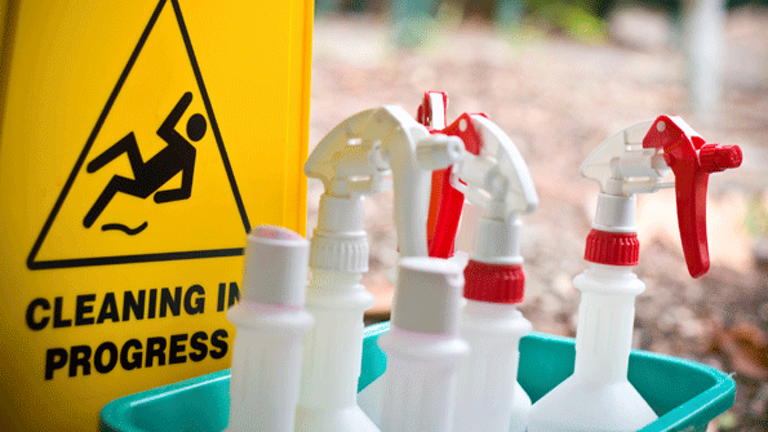
7.1 Surface Preparation and Painting
SURFACE PREPARATION AND PAINTING

SURFACE PREPARATION METHODS
In surface preparation, a variety of methods are used to remove soils or other imperfections from substrates, creating a surface that bonds well with the coating. The most common form of debris are oils and/or greases that originate from mechanical processing or oils and greases that are deliberately applied for temporary storage or shipping. Other contaminants commonly include oxidation, rust, corrosion, heat scale, tarnish, and smut.

For coatings requiring only minimal surface preparation, the surface needs to be prepared in accordance to standards and smoothness. Tightly adhered rust, mill scale or previous coating can remain provided it cannot be removed by lifting with a dull putty knife using moderate pressure.
CHEMICAL CLEANING METHOD
Chemical Cleaning
This method involves the removal of dirt, oil, grease and other foreign materials with organic solvents, detergents or commercial cleaners using one of several cleaning methods such as wiping, steam cleaning, or vapor degreasing. Use one or more of the following techniques.

Chemical Cleaning Methods
Pure Strength Cleaner/Degreaser: Removes dirt, grease, oil, adhesives, road tar, and more. Agitate for one minute before use. Apply directly on the surface, rub with a brush or cloth, and rinse thoroughly with clean water or wipe with a damp cloth. For large jobs dilute Cleaner/Degreaser with water. All surfaces must be dry before coating is applied.
Steam Cleaning: Recommended for removing grease, oil, salt, acid, alkali, and similar chemical residue from large areas. For maximum effectiveness, steam cleaning should be used in combination with alkaline cleaning. The surface must be thoroughly dry and free of residue before it is coated.
Alkaline Cleaning: For removal of dust, dirt, wax, grease, oil, fat, salt, acid residue, etc., scrub surface with a strong commercial detergent solution such as trisodium phosphate (TSP), then flush thoroughly with fresh water. Surface must be completely dry and free of any residue before it is coated.
Volatile Solvent Cleaning: Make certain the area is well ventilated. Apply solvent to the surface with cloths, sponges, or brushes and scrub to remove grease and oil. Several successive wipings are usually necessary, using clean cloths and solvent each time. For optimum results follow with Alkaline Cleaning.
HAND AND POWER TOOL CLEANING METHODS
Hand Tool Cleaning

Loose rust, loose mill scale and deteriorated coatings can be removed by effective use of hand and power tools. Brush-Off Grade Blasting cleans to the same requirements and may be used as an alternative to scraping and wire brushing. Prior to scraping and wire brushing, remove grease, oil, salt, chemical dust, and other contaminants by Chemical Cleaning. Removal of heavy rust scale, light mill scale, or previous coatings over extensive areas usually requires Commercial Grade Blast Cleaning or Industrial Blast Cleaning .
Chip, scrape, or wire brush rusted surfaces thoroughly to produce a tightly adhered surface that is clean and free of foreign matter to assure good coating adhesion. Care must be taken with power tools to avoid polishing a metal surface or abrading it too deeply. Tightly adhered coatings which are very hard or glossy should be sanded to remove gloss and slightly roughen the surface. This will contribute to maximum adhesion of the new coating. Examine existing coatings carefully for signs of rust beneath the coating. If present, remove coatings in these areas.
Power Tool Cleaning
Loose rust, loose mill scale and deteriorated coatings can be removed by effective use of hand and power tools. Brush-Off Grade Blasting cleans to the same requirements and may be used as an alternative to scraping and wire brushing. Prior to scraping and wire brushing, remove grease, oil, salt, chemical dust, and other contaminants by Chemical Cleaning. Removal of heavy rust scale, light mill scale, or previous coatings over extensive areas usually requires Commercial Grade Blast Cleaning or Industrial Blast Cleaning .

Chip, scrape, or wire brush rusted surfaces thoroughly to produce a tightly adhered surface that is clean and free of foreign matter to assure good coating adhesion. Care must be taken with power tools to avoid polishing a metal surface or abrading it too deeply.
Tightly adhered coatings which are very hard or glossy should be sanded to remove gloss and slightly roughen the surface. This will contribute to maximum adhesion of the new coating. Examine existing coatings carefully for signs of rust beneath the coating. If present, remove coatings in these areas.
Power Tool Cleaning to Bare Metal
Power tool cleaning to produce a bare metal surface and to retain or produce a surface profile. This cleaning specification exceeds Power Tool Cleaning in that it requires complete removal of all visible oil, grease, dirt, mill scale, rust, paint, oxide, corrosion products, and other foreign matter. Slight residues of rust and paint may be left in the lower portions of pits if the original surface is pitted. If the surface is to be roughened, the surface profile produced shall be not less than 1 mil (25μ) and shall be to a degree suitable for the specified paint system.


